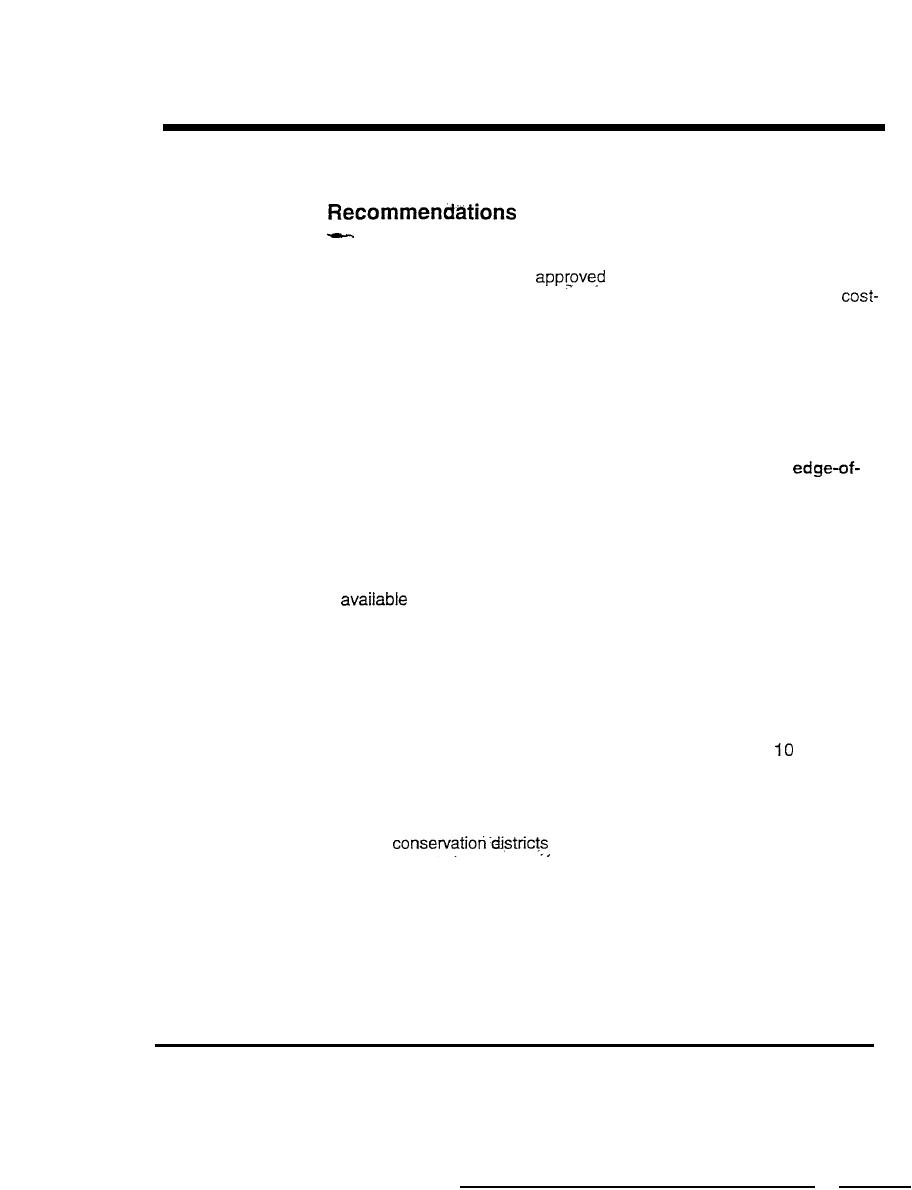
4. Discussion and Recommendations
Chapter 4
Discussion and
In the preceding chapters, we have presented quantitative technical information
regarding the cost-effectiveness of
agricultural management measures.
The purpose of this chapter is to provide recommendations on how to target
sharing money to more effectively reduce nutrient loading. We recommend that
several issues be considered in the process of developing a strategy for Phase II
of the Nutrient Trading Program. These issues are discussed in the following
sections.
4.1
The Agricultural Cost-Share Program could place a higher-priority on
nutrient (and particularly, nitrogen) management. Nutrient management
has been proven to be a cost-effective strategy for reducing both
field and watershed loading from agricultural lands. "Nutrient management"
in this context refers to both the approved BMP, as well as the broader concept of
focusing management attention on optimizing and managing farm systems to
minimize nutrient losses to the environment. Nutrients supplied in excess of the
amount needed for crop requirements results in a pool of residual nutrients in the
soil. Over time, the size of the residual pool directly influences the magnitude of
or mobile forms to surface water, groundwater, and the
losses of
atmosphere. Nitrogen applications beyond the amount required for crop growth
lead to increases in the mass residual nitrogen that is vulnerable to loss from the
farm system. Nitrogen losses are greatest in agricultural watersheds in which
inputs from synthetic fertilizer, manure, or legumes greatly exceed the amount of
nitrogen taken up by the crop.
Virginia provides an example of a State with an active nutrient management
field
program. Virginia's program is staffed with a program manager and
nutrient management specialists to assist farmers. As of October 1993, they had
developed over 1,000 nutrient management plans on 240,000 acres of cropland.
Nutrient reductions from these activities are estimated at 5.2 million pounds of N
and 4.4 million pounds of P. In addition, Virginia has 11 water quality specialists
employed by the
to provide additional technical assistance.
Resource management plans are required in "resource protection areas" of the
coastal zone under the Chesapeake Bay Preservation Act and are also a
requirement for receiving certain types of financial and technical assistance (L.
Danielson, 1994)
The most important opportunity for improving nutrient management IS to refine
recommendations for application of synthetic fertilizers. Although nitrogen is
supplied to cropping systems from many sources, including legumes and
51



 Previous Page
Previous Page
